The highly anticipated UEFA Champions League 2021/22 final saw two of the best teams in the world go up against each other. In the end, Real Madrid gained the edge in a very tight battle, winning their 14th Champions League title. The former AC Milan and Chelsea boss Carlo Ancelotti also became the most successful manager in Champions League history, winning it for the fourth time in his career.
The two managers have completely different tactics. While Liverpool played controlled ‘heavy-metal’ football, Real Madrid played free-flowing football, relying on creativity and talent. As Ancelotti put it, “football is simple”. The Italian believes he can help defensively, with organisation and structure. However, in possession, he believes it is about talent and creativity. He says he doesn’t want to “obfuscate this creativity, this talent”.
Liverpool created far more chances and dominated the match, but in the end, it was Real Madrid’s talent and efficiency that gave them the edge. In this tactical analysis, we will examine both teams’ tactics throughout the match. It will also be an analysis of how Real Madrid gained the edge tactically to win the game.
Lineups
The lineups were no surprise, with both teams setting up in their usual 4-3-3. While the two teams adopted the same structure, their tactics were very different. Additionally, their structures were very flexible, often changing throughout the different phases of the game. For Liverpool, Alisson was in goal with Trent Alexander-Arnold, Ibrahima Konaté, Virgil van Dijk, and Andrew Robertson ahead of him. Having recently recovered from injury, Fabinho played alongside Thiago Alcântara and Jordan Henderson. In the attack, Sadio Mané was the false-nine flanked by Luis Díaz and Mohamed Salah.
Real Madrid had no surprises either. Thibaut Courtois was in goal behind Dani Carvajal, Éder Militão, David Alaba, and Ferland Mendy. In the midfield, it was their traditional Casemiro, Toni Kroos, and Luka Modrić trio. Fede Valverde and Vini Jr. were on the wings with Karim Benzema up top.
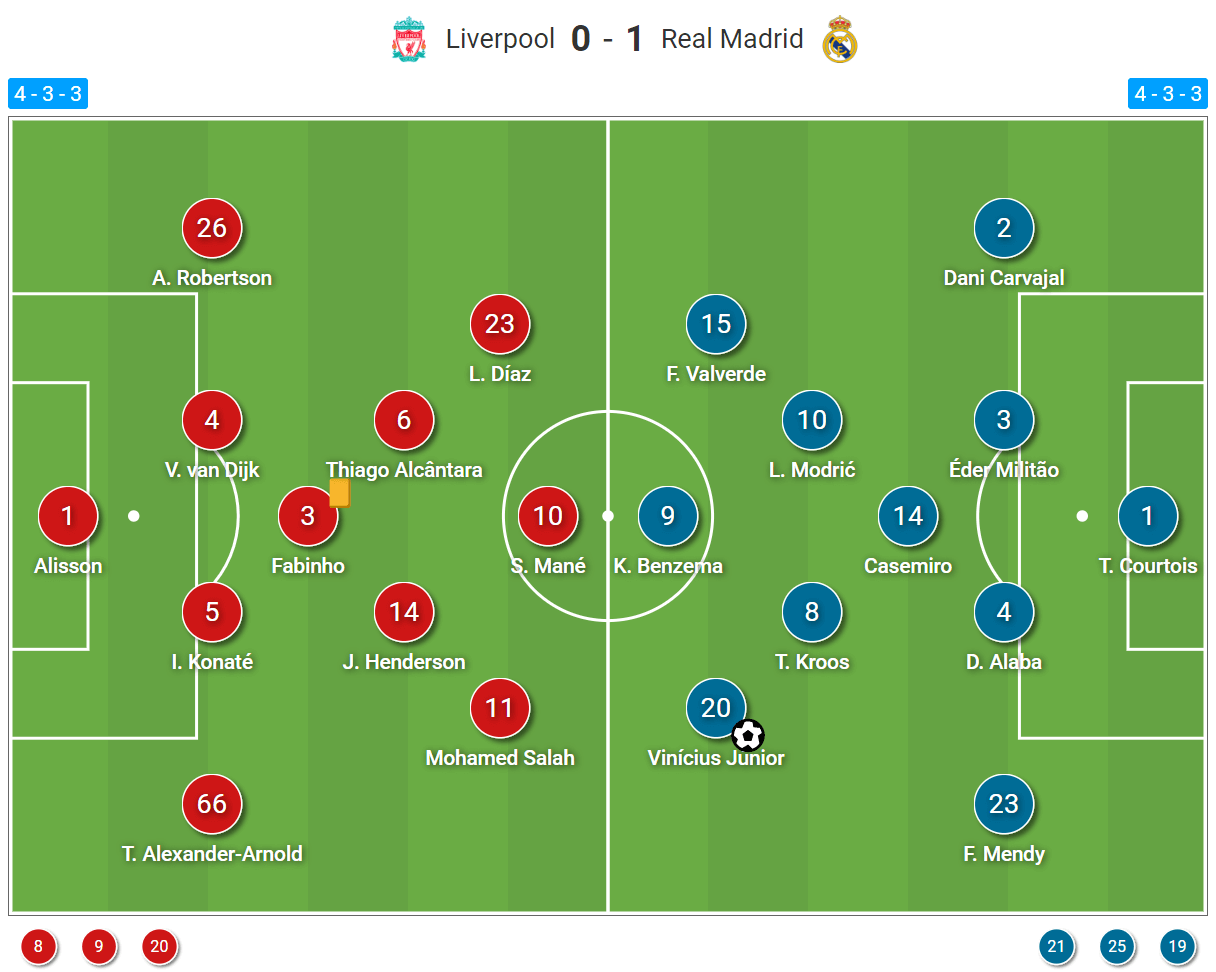
Liverpool’s press
Liverpool pressed from the beginning, not allowing Real Madrid to have any sort of controlled possession. Although possession was fairly even with Liverpool only having 51.37% of it, the match was mostly played in Madrid’s half. The Reds also created far more chances with 2.17 xG compared to Madrid’s 0.39. This territorial dominance can be further illustrated through their average positions.
Los Blancos remained in their half for most of the match as seen in their average positions below.
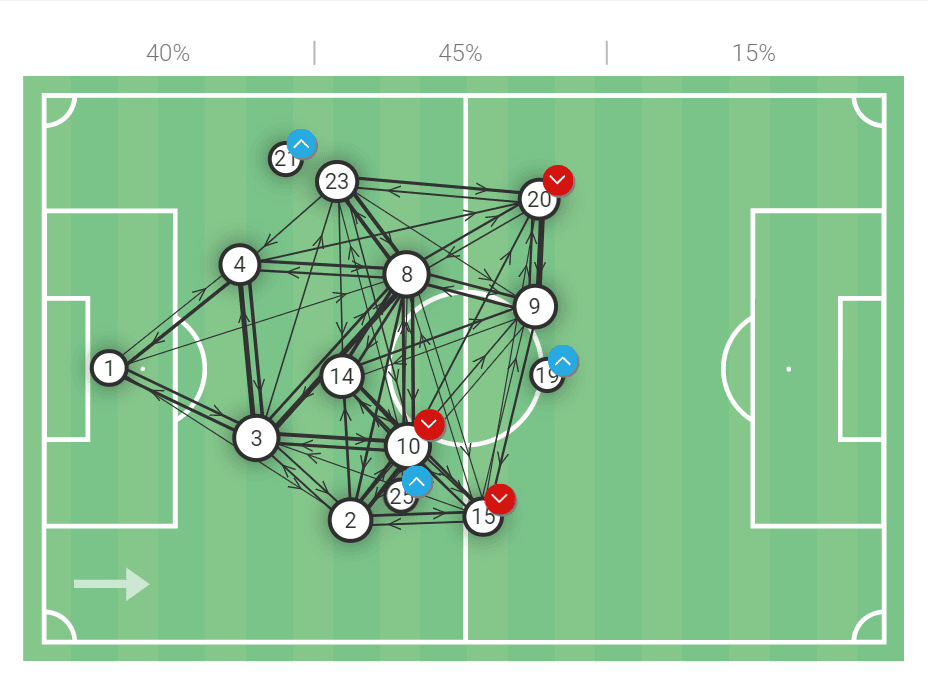
Jürgen Klopp’s men applied pressure and remained in the opposition half for most of the 90 minutes. Their average positions below further illustrate this, being significantly more advanced than Real’s.
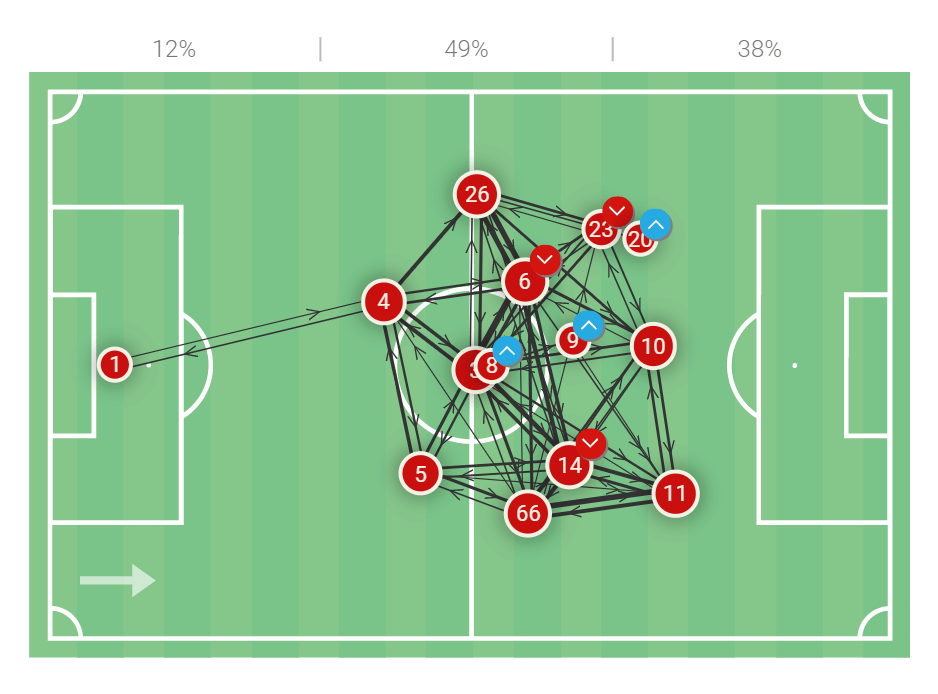
The Reds pressed from the very start in their usual 4-3-3 shape. The key to their success was their compactness. They significantly compressed the pitch, making it very difficult for Real to build up. Klopp’s men would move as a unit from side to side as seen below. As they begin to shift to the right, Fabinho leaves Modrić and marks Benzema. In the beginning of the match, Modrić and Kroos were positioned much higher which also hindered their ability to build up.
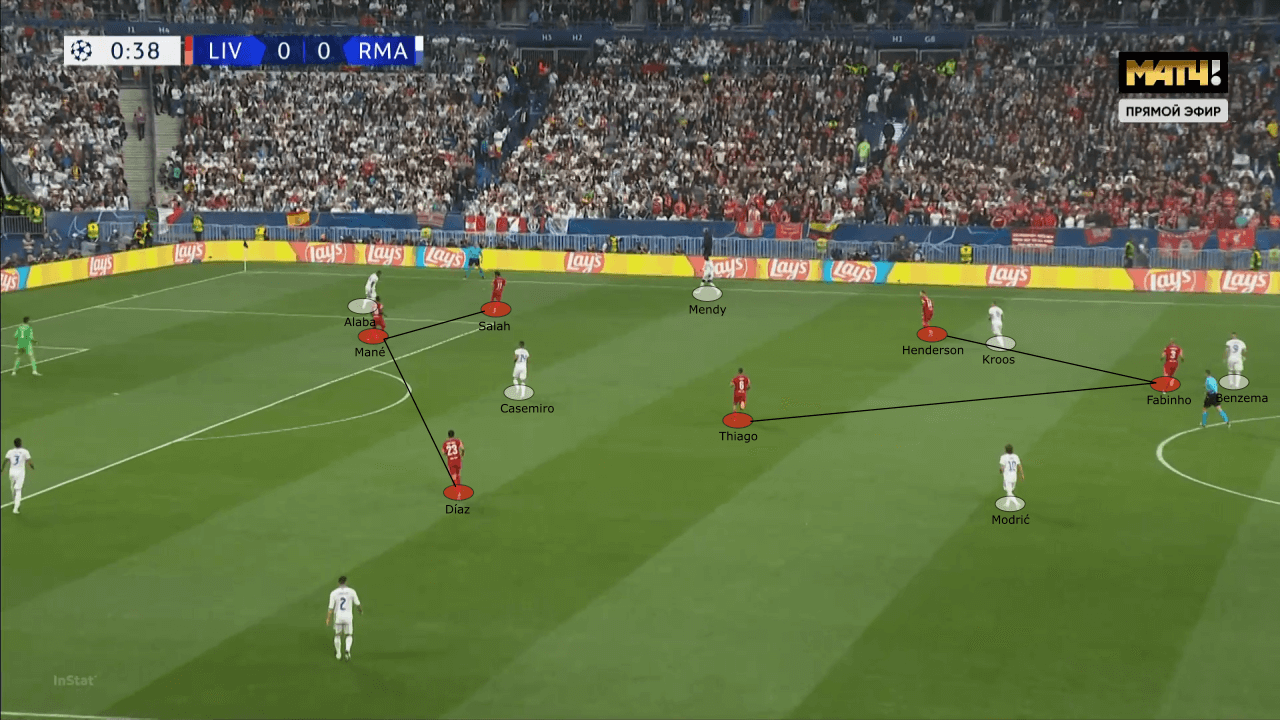
When they lowered their block, they maintained a similar structure. Mané now focused on keeping Casemiro from getting involved while Díaz and Salah stayed narrow to keep them from accessing the midfield.
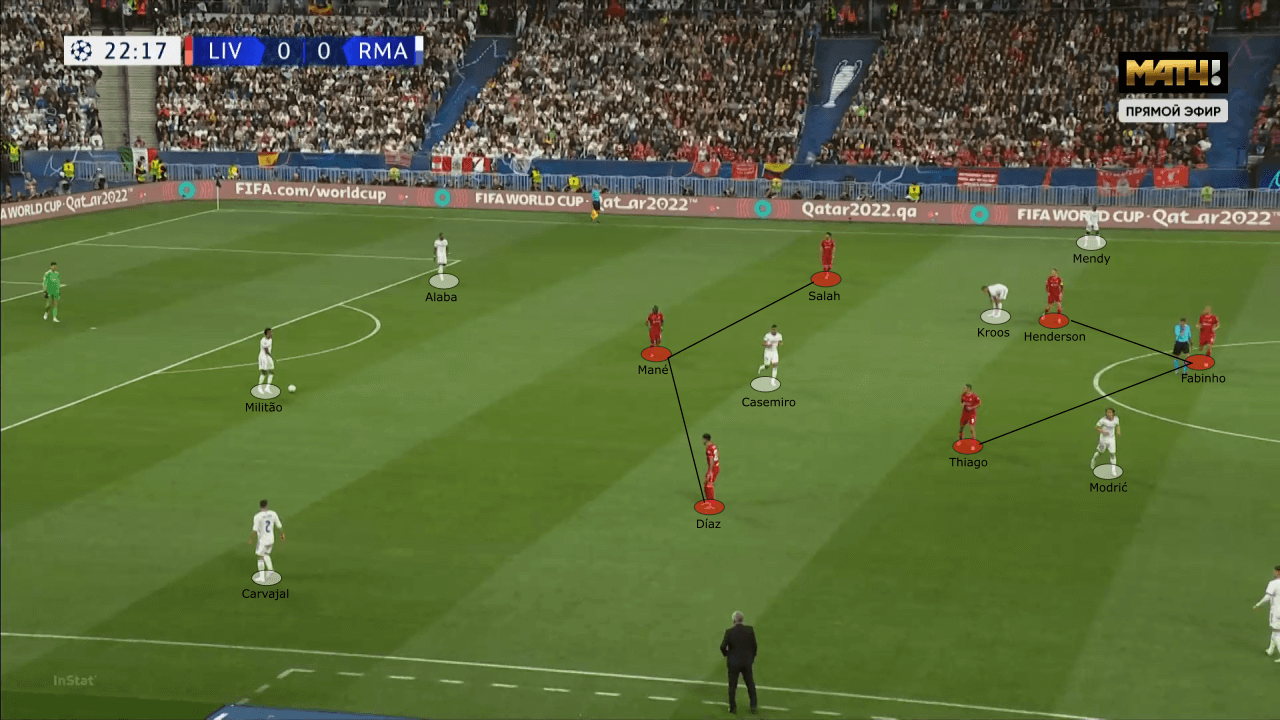
As stated, compressing the pitch is a key aspect of a successful press. Liverpool do this very well in their ‘heavy-metal’ brand of football, not allowing the opposition time or space on the ball. In the instance below, for example, the Reds immediately press and circle Casemiro as he enters the midfield.
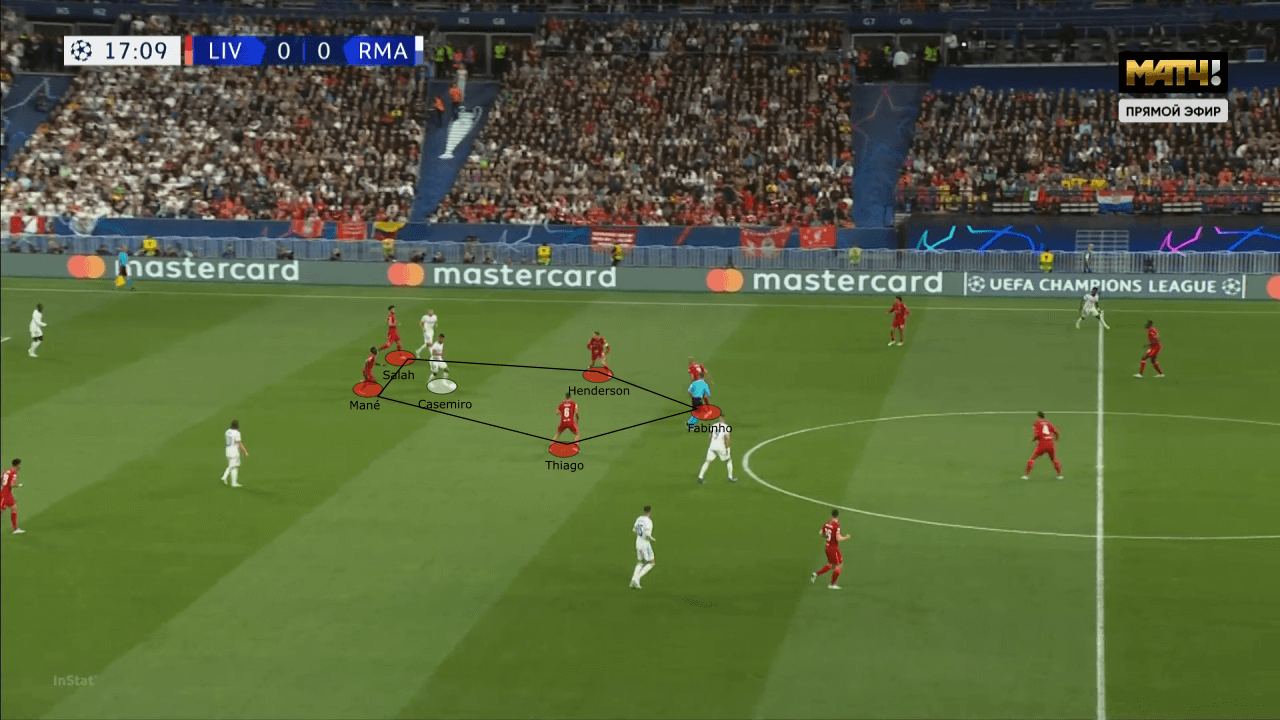
Los Merengues initially tried to create an overload on the right side. Carvajal often advanced near Valverde while Modrić shifted over. However, Liverpool were frequently able to block this option with intelligent movement and positioning from their players. In this case, Thiago’s positioning keeps Modrić from being activated.
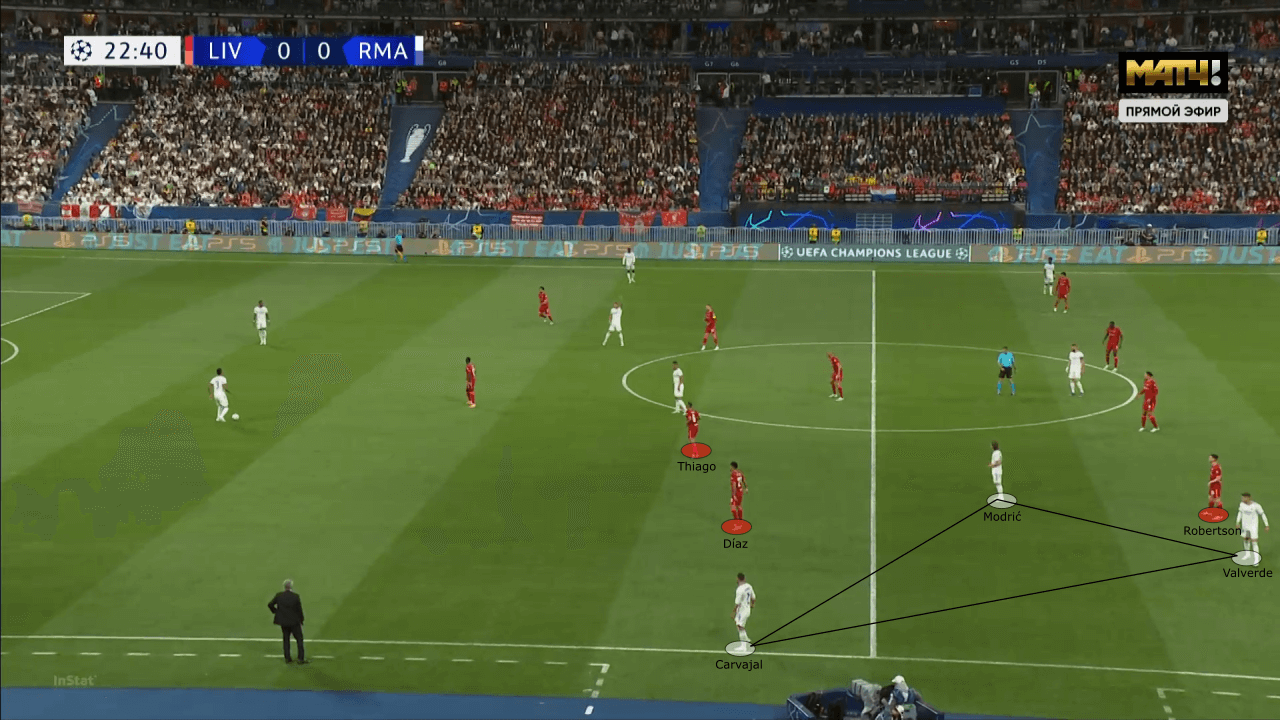
In conclusion, Liverpool had a fairly effective high press in the final third. They kept Real in their half for most of the match and were frequently able to recover possession. They also kept Real from creating any controlled attacks, with Courtois playing 13 long passes in the match. Furthermore, 14.97% of Real Madrid’s passes were long compared to 6.33% of Liverpool’s. While Liverpool were able to dominate the space and stay in Real’s half, Ancelotti’s men maintained a solid defensive structure that was hard to break down.
Real’s defensive structure
Ancelotti’s men demonstrated incredible discipline to remain organised and compact for so long. With help from Courtois, they kept a clean sheet and secured the trophy. Their PPDA of 18.21 highlighted their passiveness out of possession. They were content in soaking up the pressure and exploring the spaces in transition. Higher up the pitch, they often maintained a 4-4-2 structure without the ball.
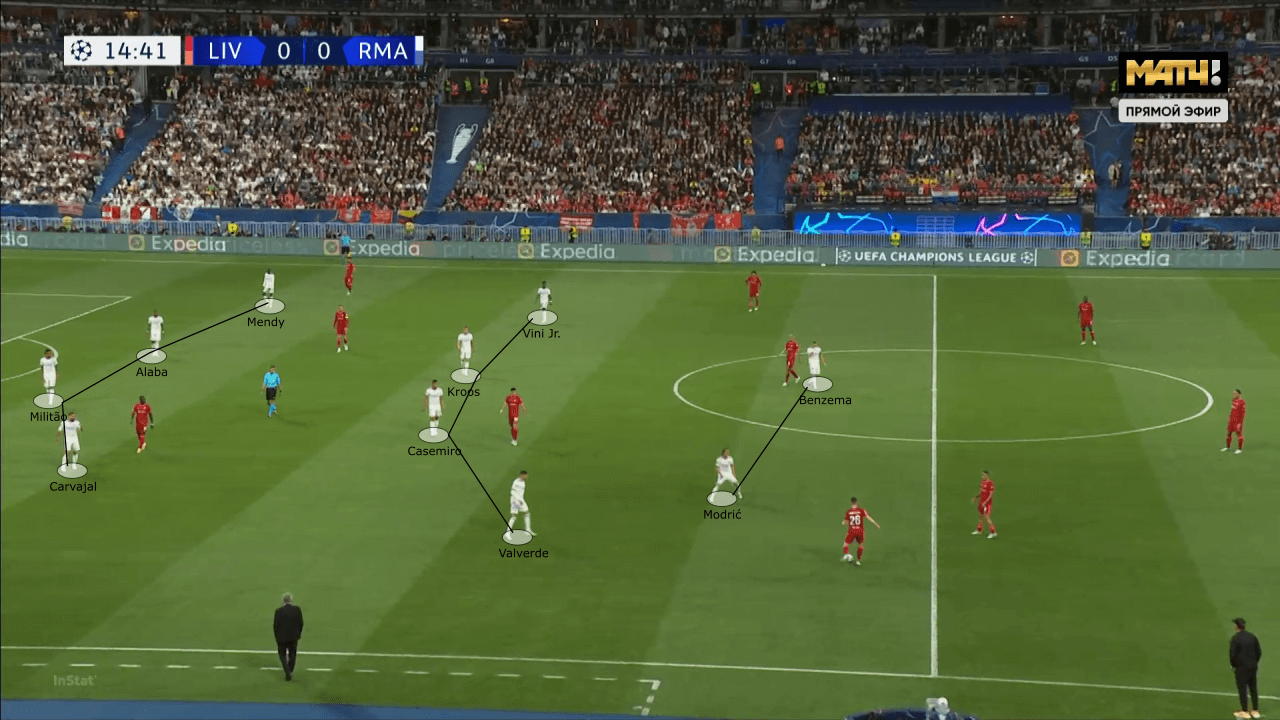
In some scenarios, Vini Jr. would take a bit longer to track back defensively. When this was the case, Modrić dropped alongside Casemiro to form the second line of four.
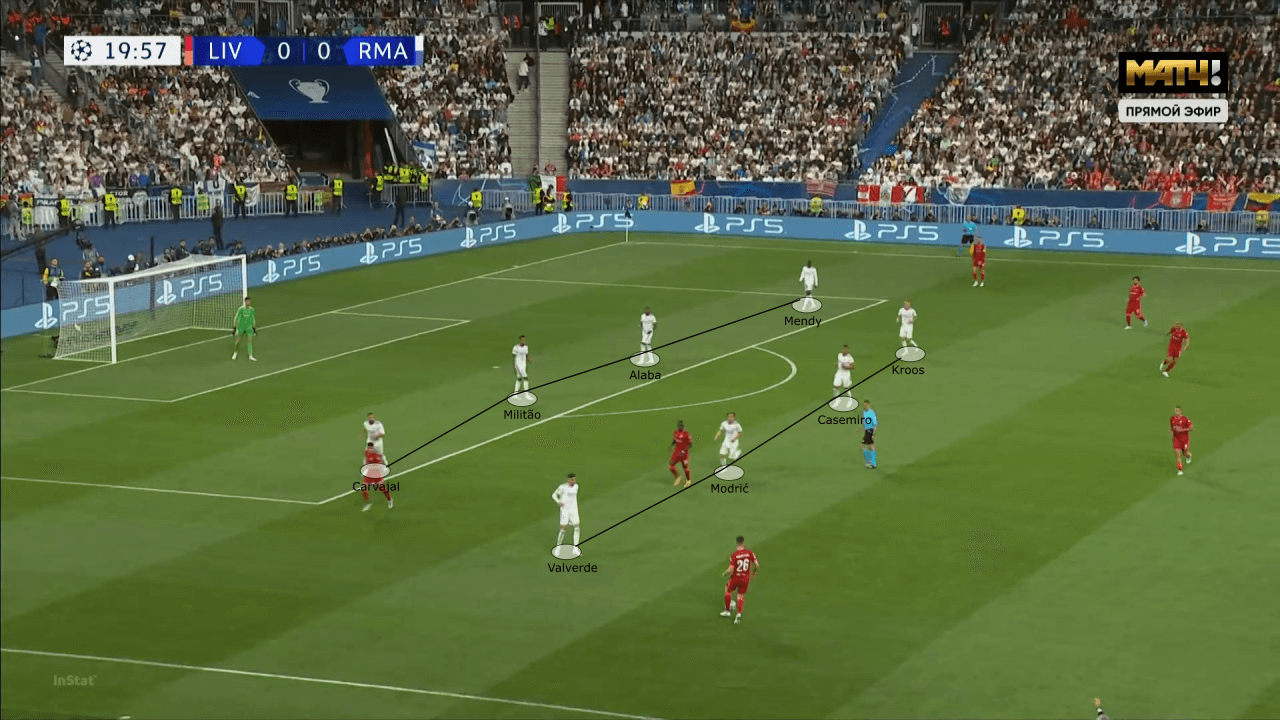
When Klopp’s men focused their attack on the wings, one of the midfielders would shift over while Casemiro provided cover. This essentially formed their usual single-pivot trio structure. They remained compact and moved as a unit to keep Liverpool from creating danger.
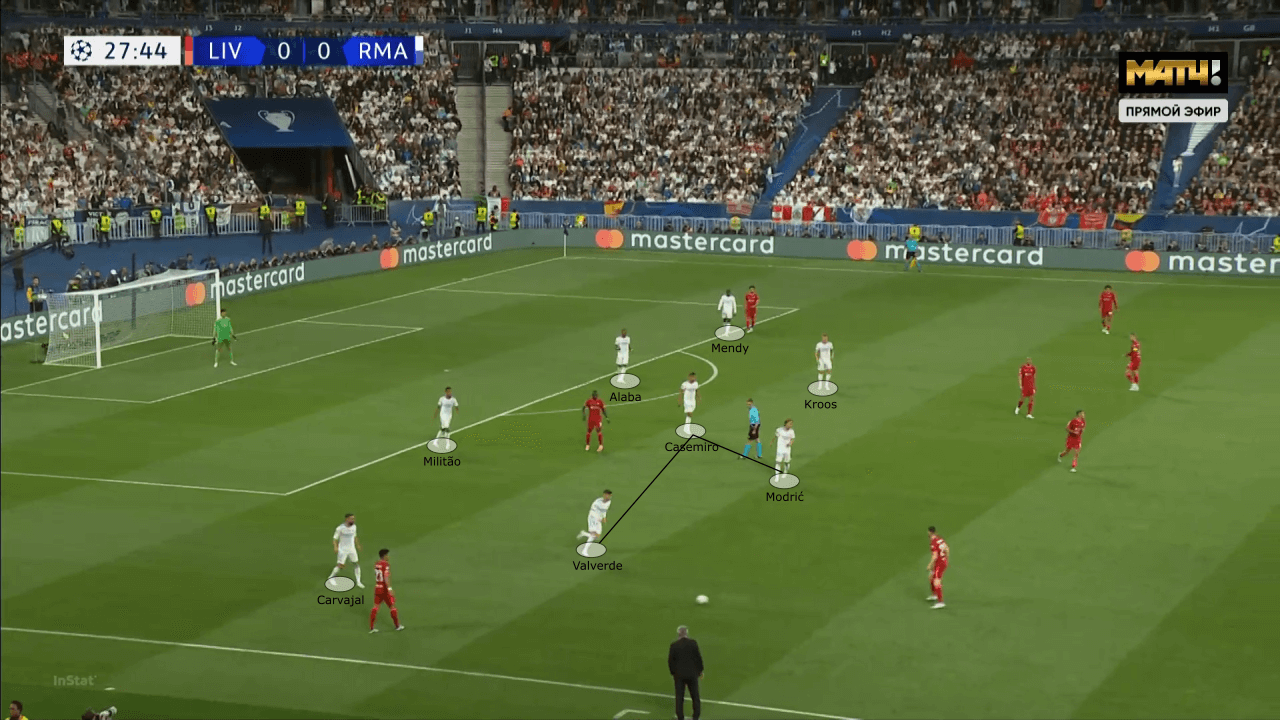
Now on the other side, they adopt a similar structure with different players. Casemiro dropping behind allows him to provide cover and track any players. It essentially creates a very compact structure that Liverpool struggled to break down.
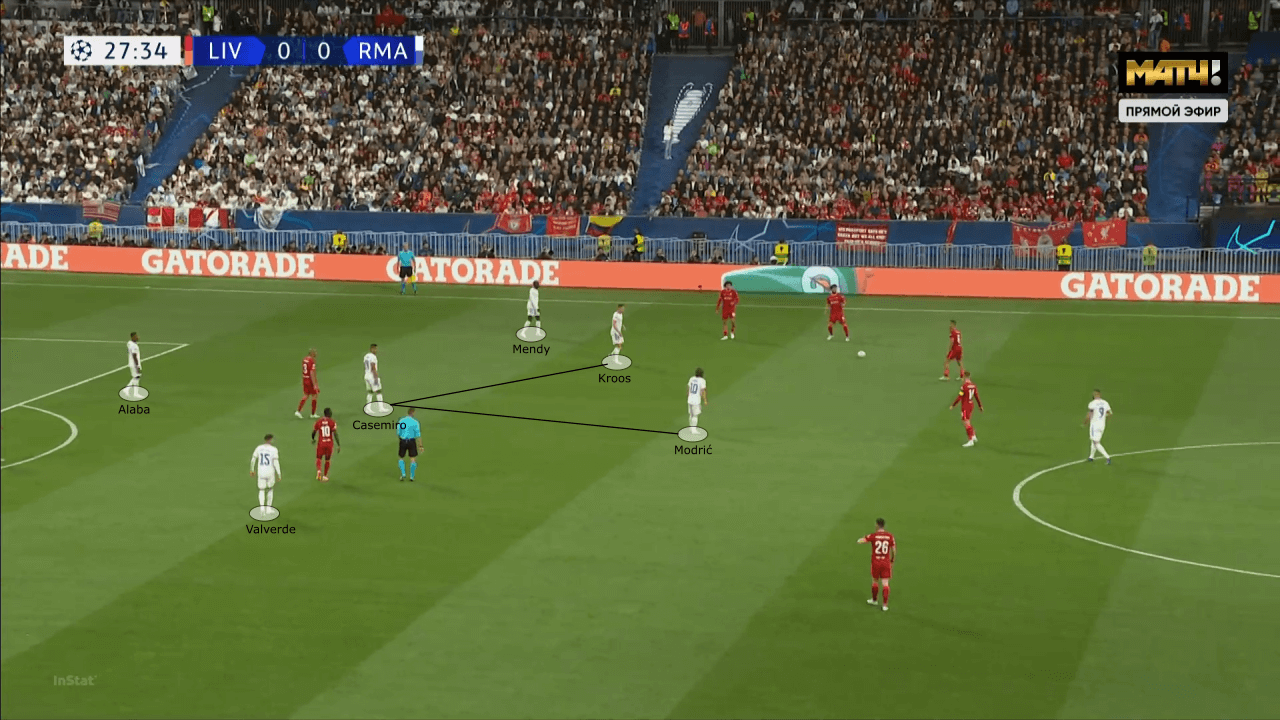
Los Merengues were highly successful in defending in numbers. Moving as a unit, they were able to overload the Reds and create numerical superiority in the given area. This made it very hard for Liverpool to play through and enter the final third effectively. On the wing below, they have six players for Liverpool’s three.
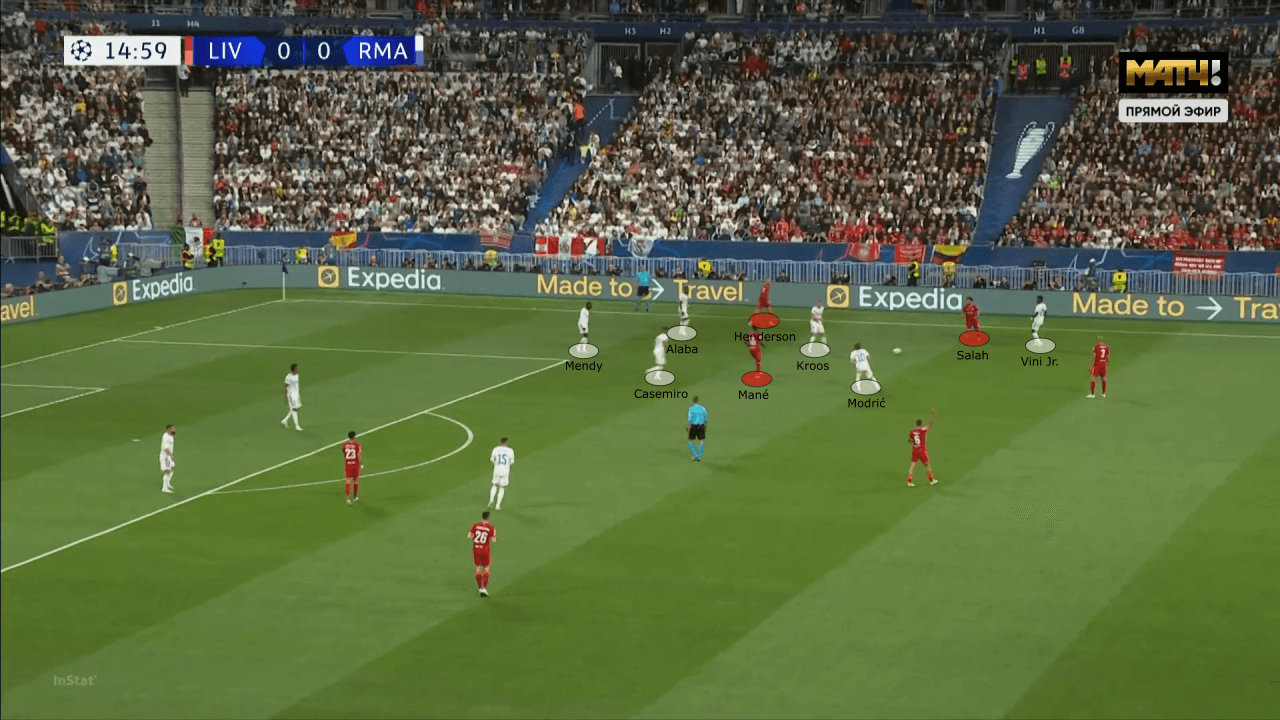
Real’s adjustment
As we have seen, Liverpool’s press was incredibly successful in keeping Real from creating any threat. Keeping Modrić and Kroos from getting involved was, initially, a huge part of their success. The two are essential to Real Madrid’s attack and their involvement later on ended up deciding the match. Whether it was an instruction from Ancelotti or a decision by the midfielders themselves, their change in behaviour made them much more effective.
Both players offer tremendous quality in their passing, and their involvement in construction changed the game. Whether simultaneously or not, they would drop on either side of Casemiro to get involved in the build-up. With Fabinho hesitant to advance that high up the pitch, this often created numerical superiority and finally allowed Real to construct any real threat.
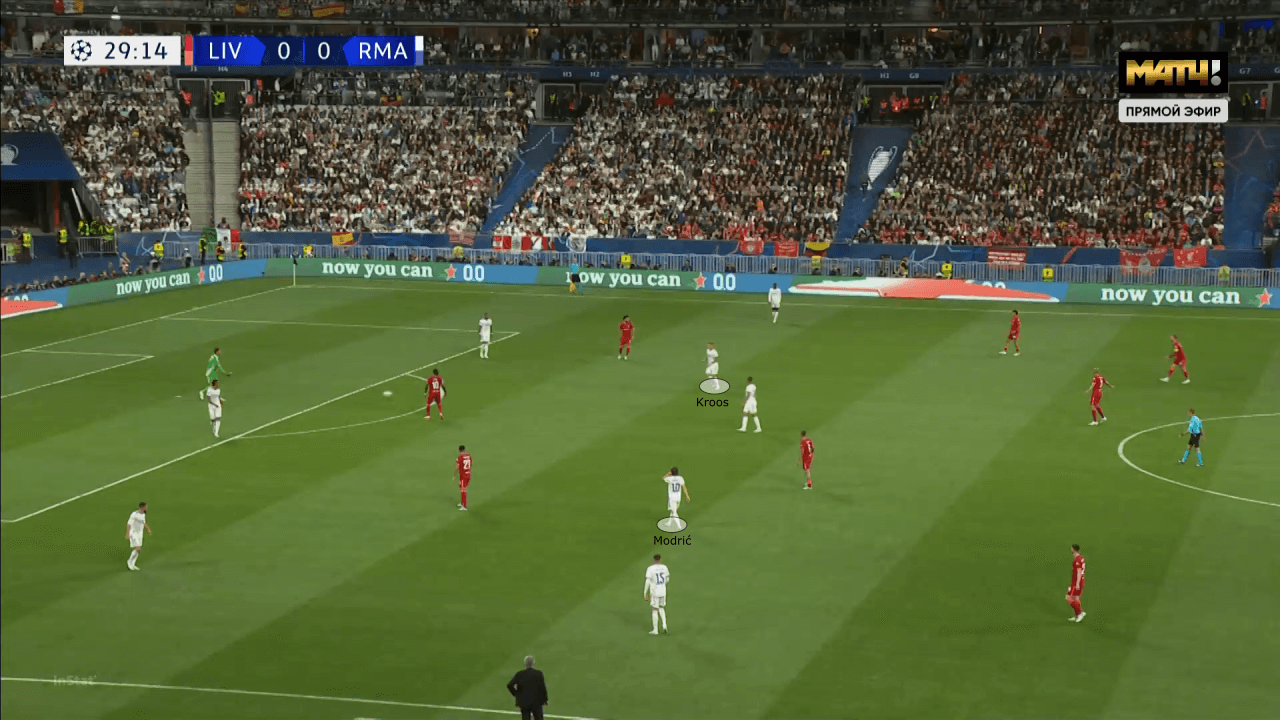
Another instance can be seen below when Modrić drops alongside Kroos. The two became deep-lying midfielders, getting on the ball earlier rather than later.
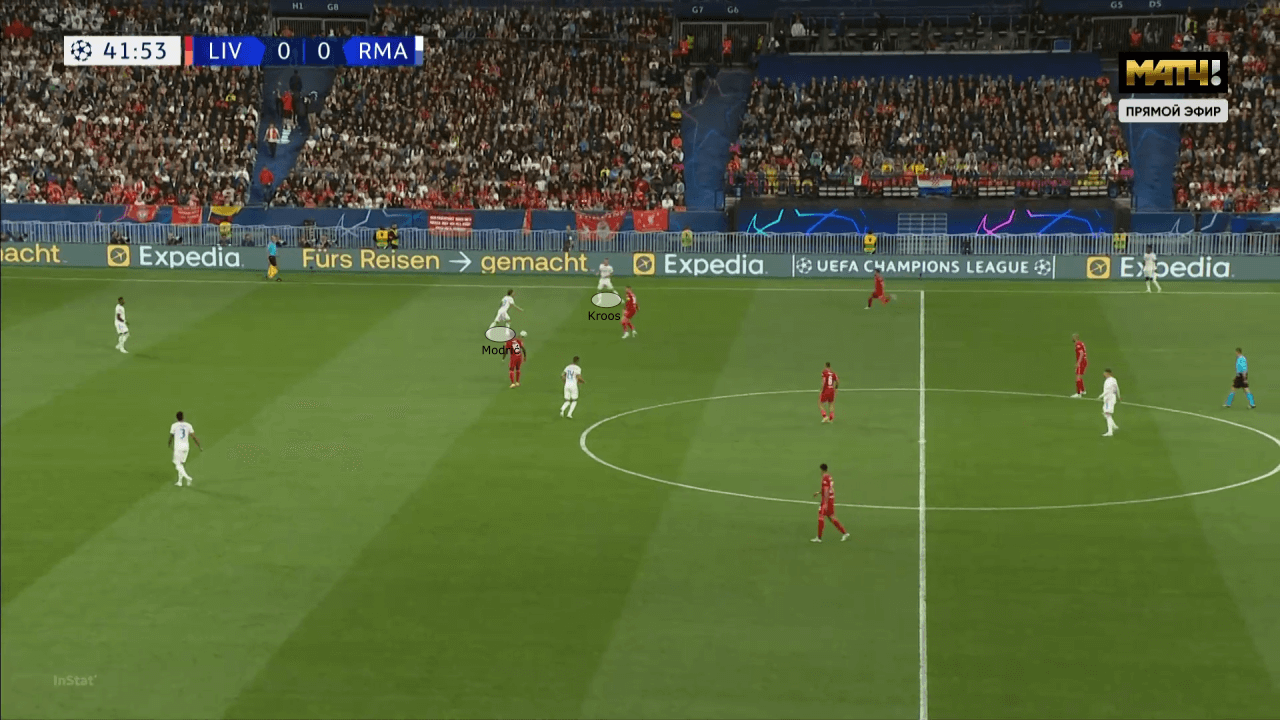
In another example, Kroos even drops to form a back three with the two centre-backs. This specific scenario highlights the change in behaviour from the midfielders and their willingness to drop and get on the ball much earlier.
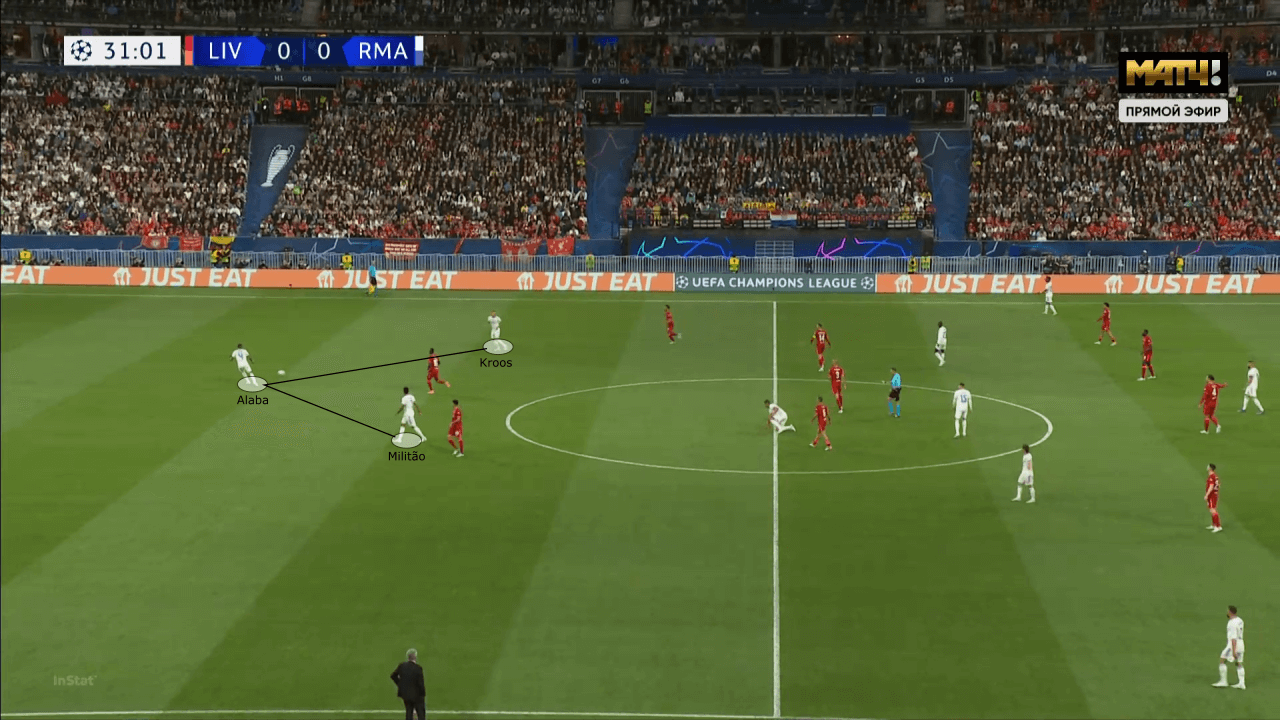
Valverde also played a role in this new Real midfield. Initially, he stayed wide looking to combine with Modrić and Carvajal. They were unable to do so, and as a consequence, he begins to drop inside and help in the midfield. This was another way through which Real created numerical superiority. In the instance below, Benzema drops alongside Modrić while Valverde and Kroos stay in the half-spaces.
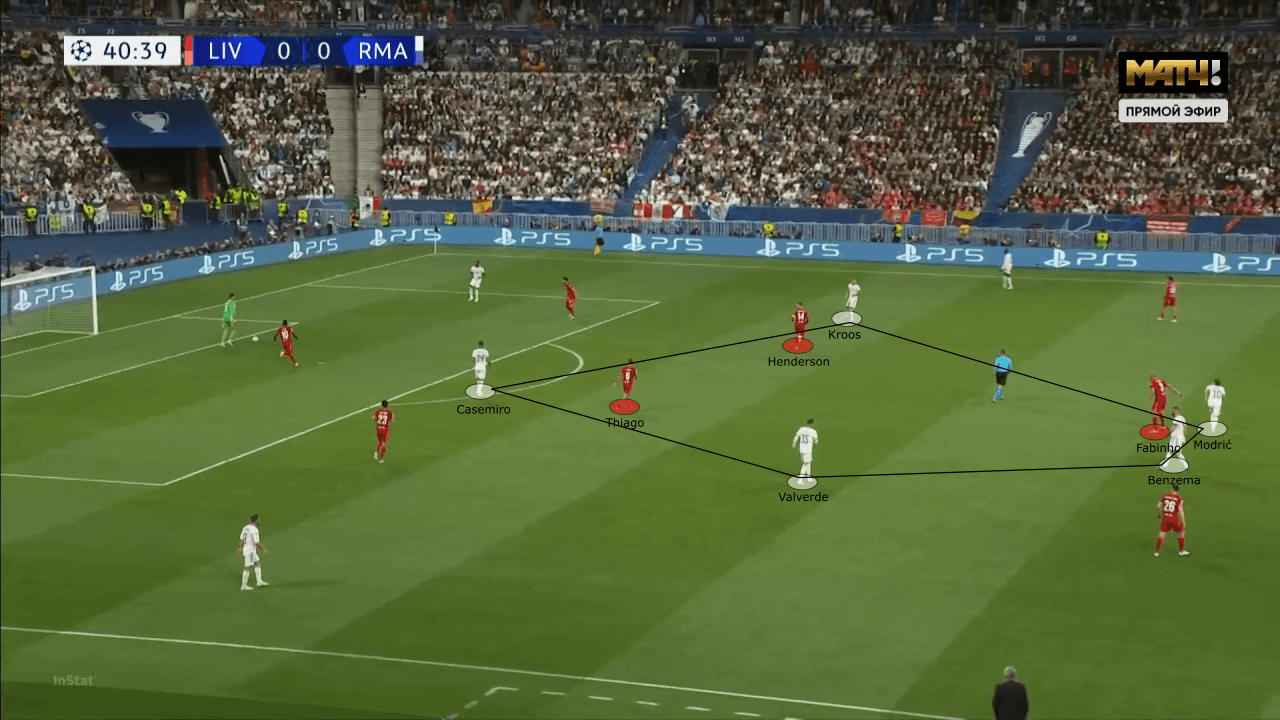
The goal came in the 59th minute from exploiting the right side. While on the left, Liverpool tried to compress the pitch as they usually do with their high press. However, Real are quick to find Carvajal who is able to attack the space.
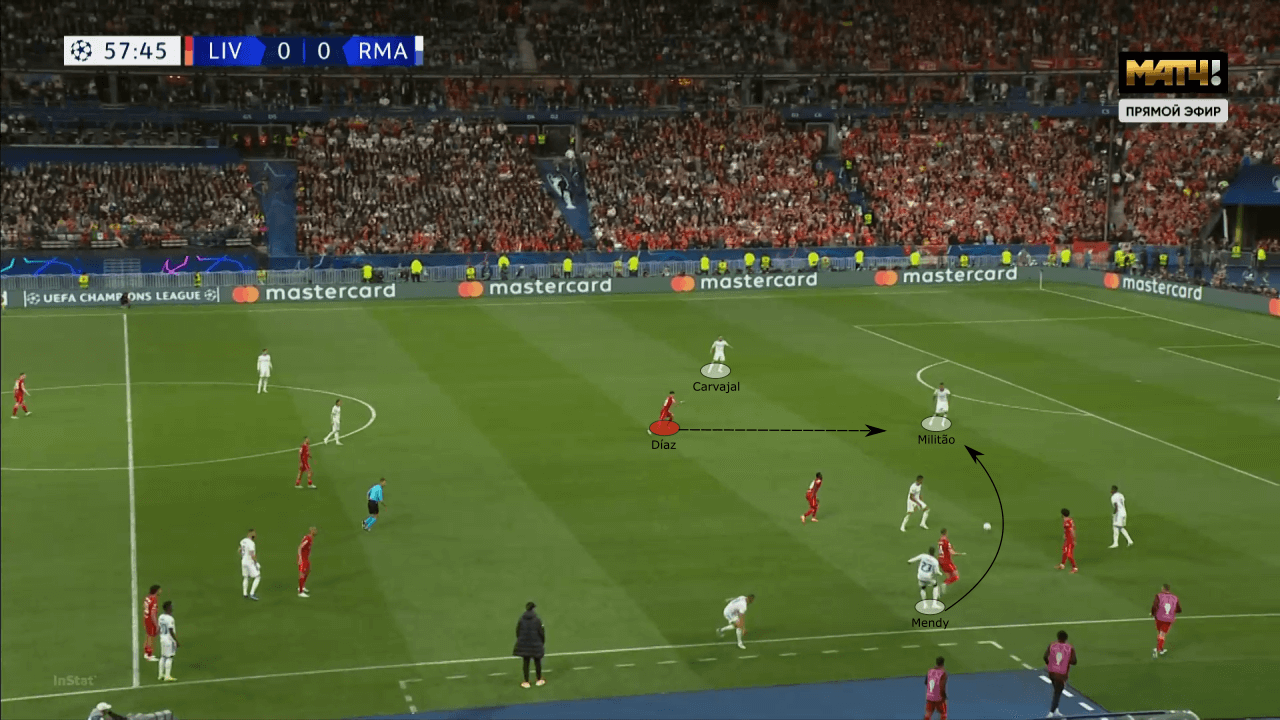
As the play develops on the right, Modrić gets on the ball in a relatively deeper position. As he does this, Carvajal pushes up higher in between the Reds’ defensive lines. Modrić is able to find him, and then Carvajal plays it inside to Casemiro. The Brazilian is then able to find Valverde with space near the touchline.
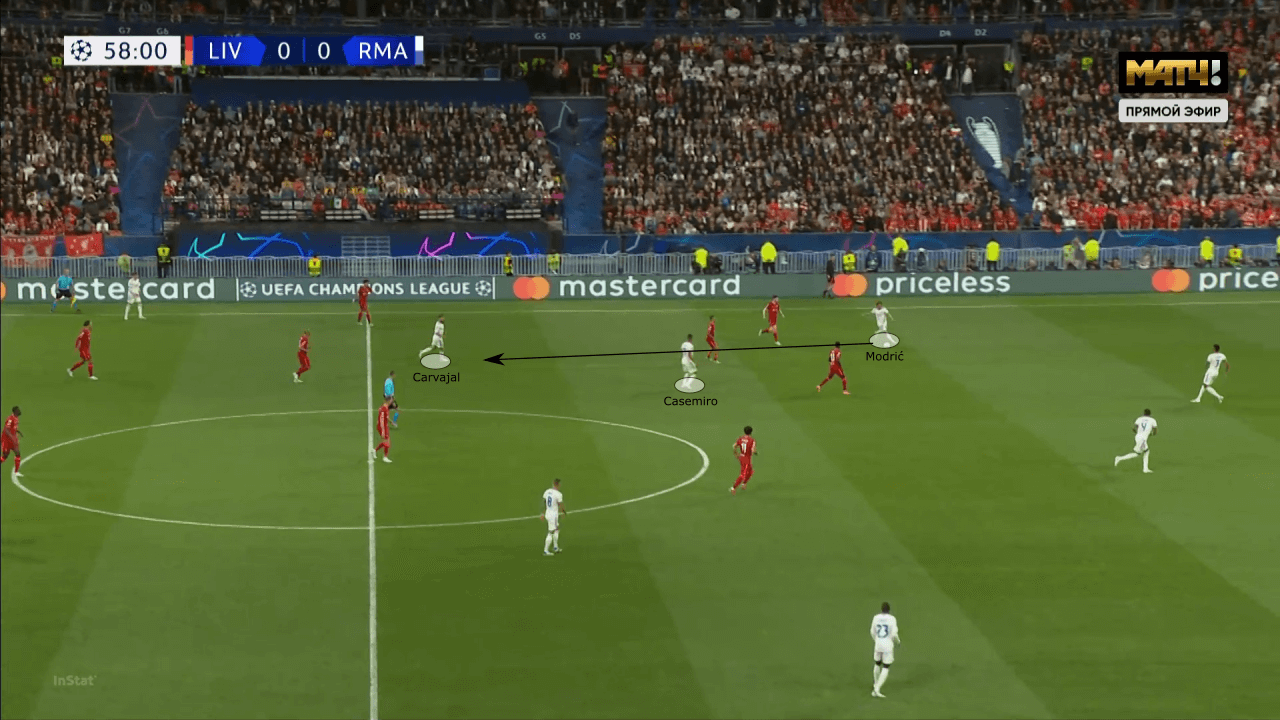
Valverde is able to quickly attack the space and capitalise on a disorganised Liverpool defence. As he gets near the box, he delivers a powerful cross to the back post where Vini Jr. finishes with ease.
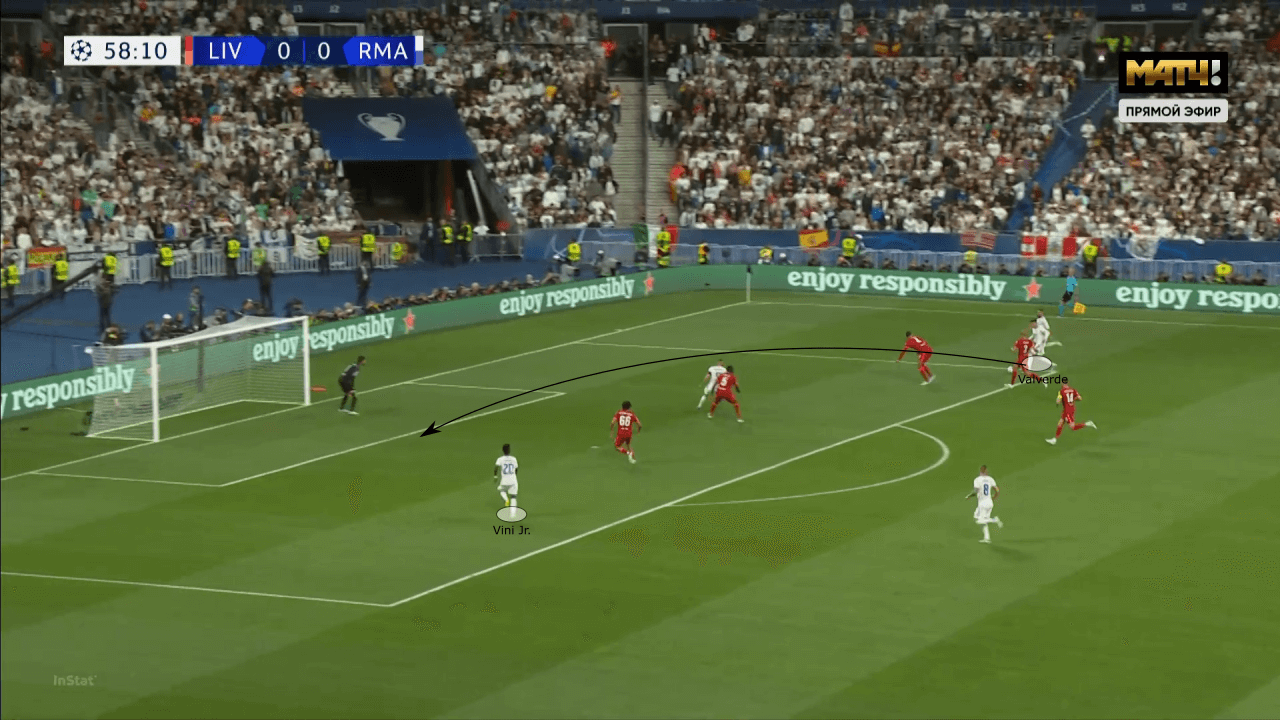
Conclusion
Liverpool dominated the match through their controlled and structured press. They were initially able to nullify Real’s midfield and frequently recover possession from Courtois’ long passes. Throughout the match, Real adjusted their midfield and Modrić and Kroos began getting on the ball from much deeper positions. Valverde also began drifting inside to help the midfield. These adjustments made them much more effective and ended up resulting in their only goal. On the other hand, Los Blancos were able to defend extremely well and resist Liverpool’s pressure. By remaining compact and not giving up spaces, they were able to limit Liverpool’s threat and come away with the victory.
Carlo Ancelotti gained the edge over Klopp in a very tight tactical battle. The 2021/22 UEFA Champions League final was a historic one with very interesting tactics. In the end, Real’s talent and discipline triumphed over Klopp’s excellent team.





Comments